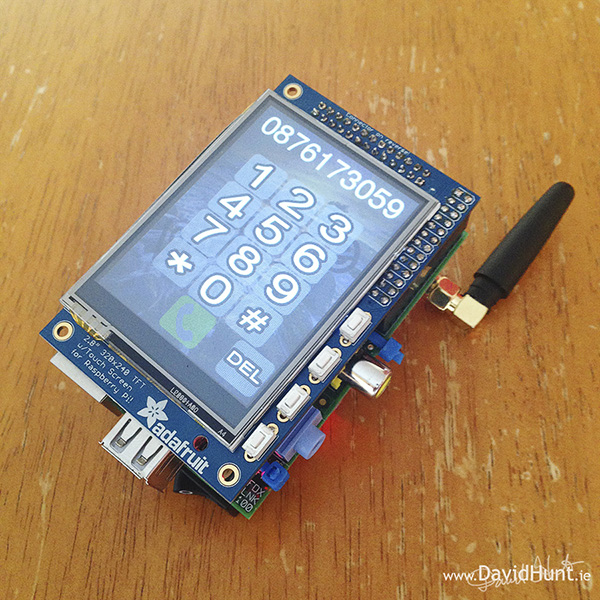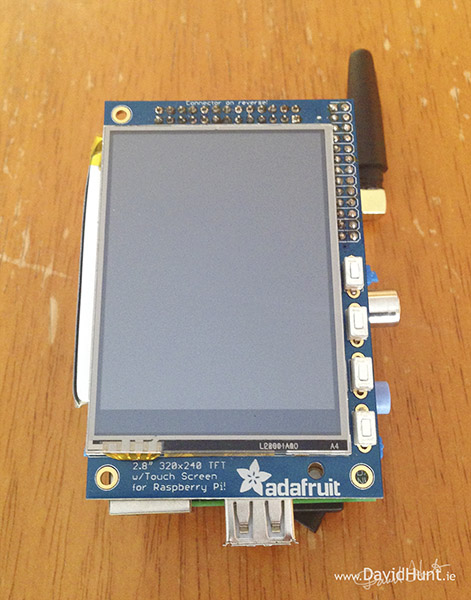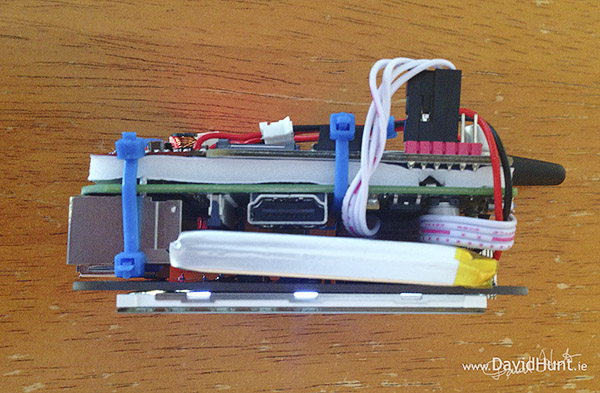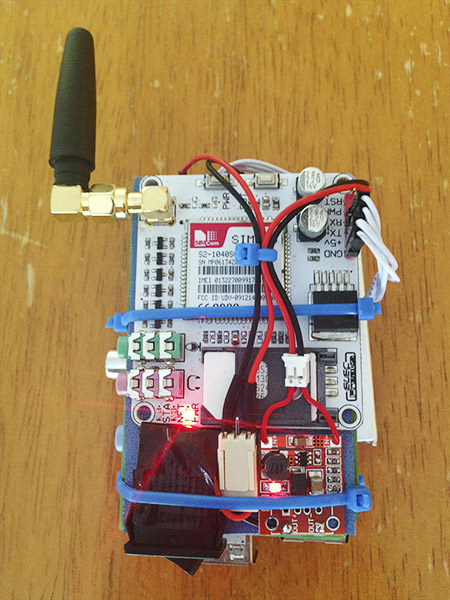
Supply list:
Raspberry Pi Model B — $40
PiTFT Toucscreen 320×240 — $35
2500 mAH LiPo battery — $15
SIM 900 GSM?GPRS module — $48
DC-DC boost converter 3.3V-5V 1A — $10
Cables, connectors, switch — $10
Total cost = $158
Senior embedded Linux software engineer David Hunter created a smartphone using Raspberry Pi. To enable the phone calling feature on this device, Hunter incorporated an Adafruit touchscreen interface and a Sim900 GSM/GPRS system. Once he gathered all of the proper shelf components, he began assembling the PiPhone.

Previously, Hunter gained experience by developing various customized Raspberry Pi devices including his own touchscreen time-lapse controller called Lapse Pi. Hunter experimented with batteries before deciding that a LiPo battery would work well in tandem with the TFT screen and Raspberry Pi. This setup allows this device to be used as a standalone mobile without any dangling external wires getting in the way.


The Sim900 GSM/GPRS module acts as the base for communications that delivers AT commands when sending texts, making calls, and accessing data. The TFT touch screen has a numeric keypad. There is a SIM card located at the bottom of the white PCB, enabling the system to connect via a GSM network. The on-off switch appears below the GSM area. A DC-DC converter converts the LiPo battery’s 3.7 volts to 5 volts. When the design was complete he noticed that the CPU device nearly overheated when left on for several minutes due to poor air circulation.

Hunter scribed his own code, and posted it on Github for public use.
Story via David Hunt
Advertisement
Learn more about Electronic Products Digital





